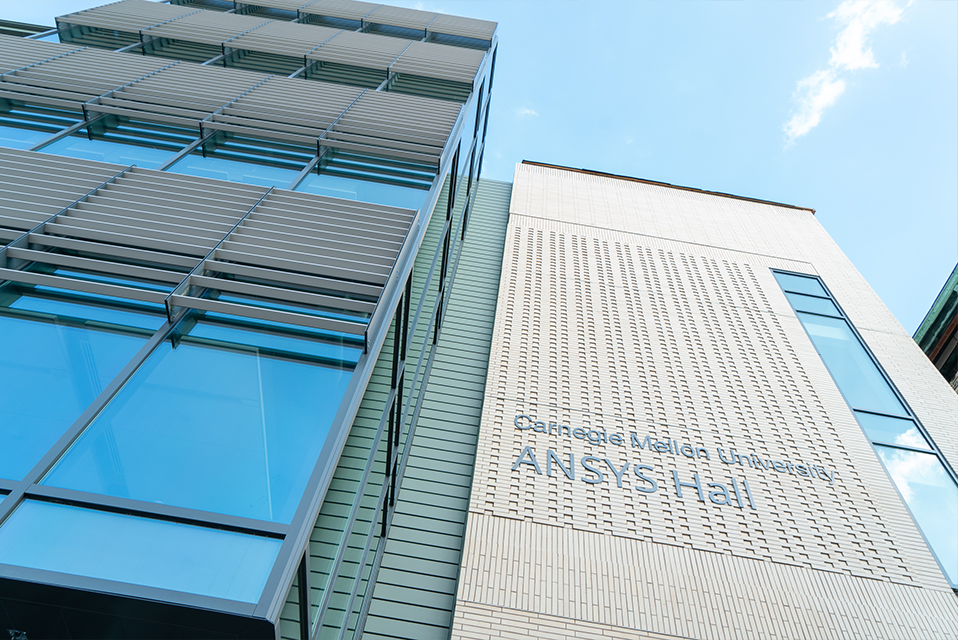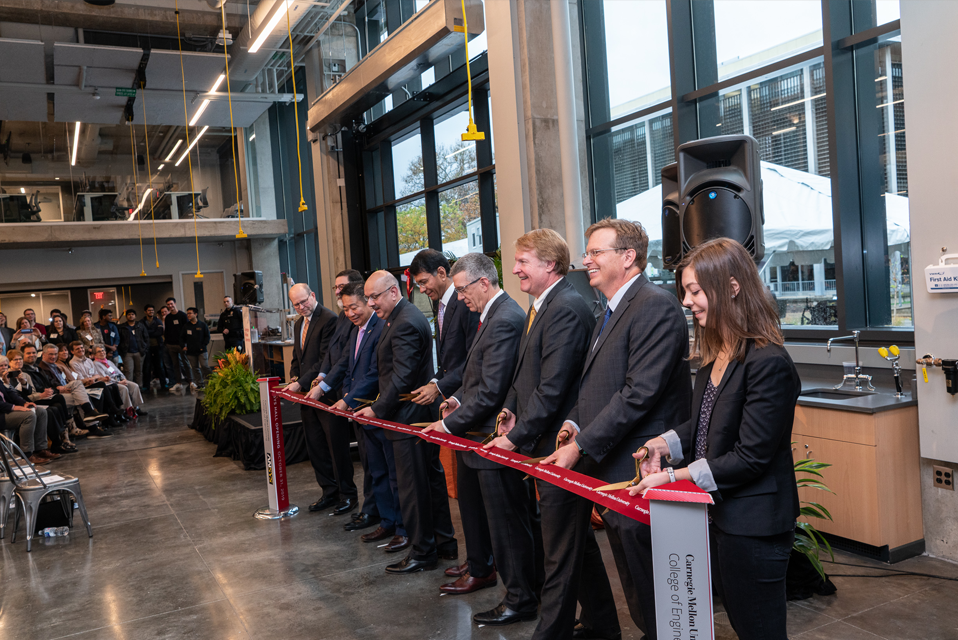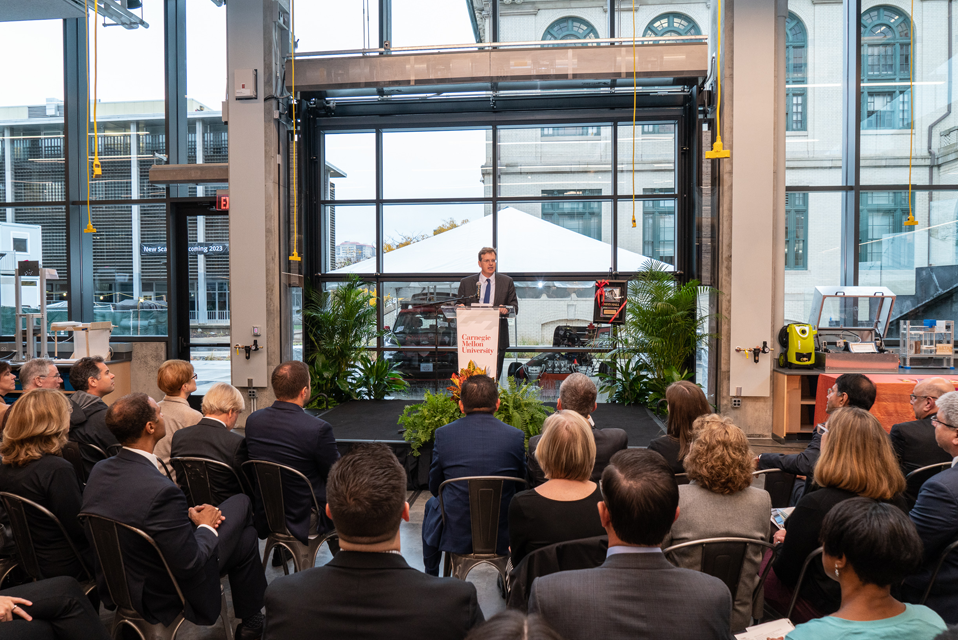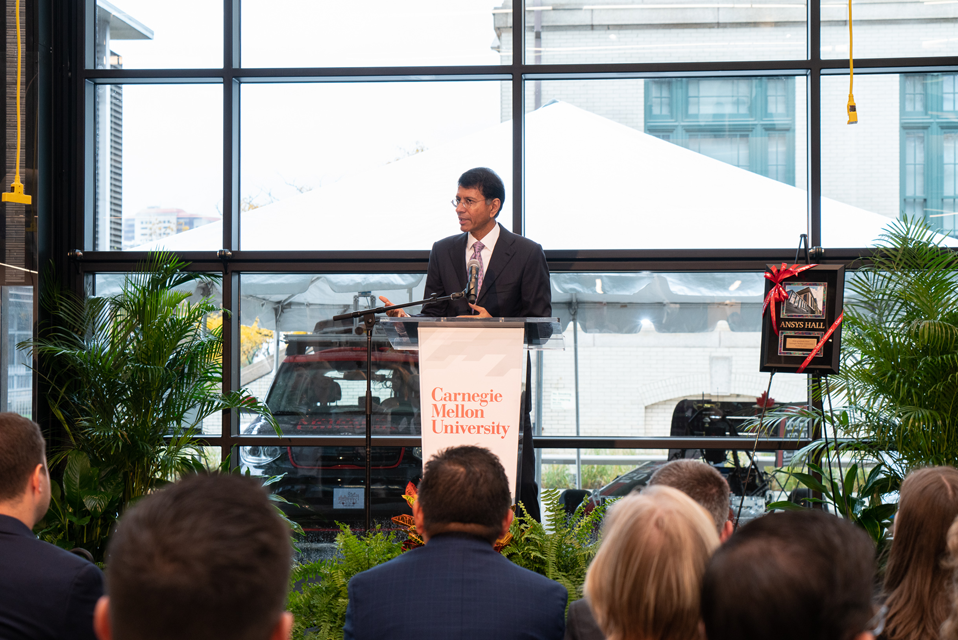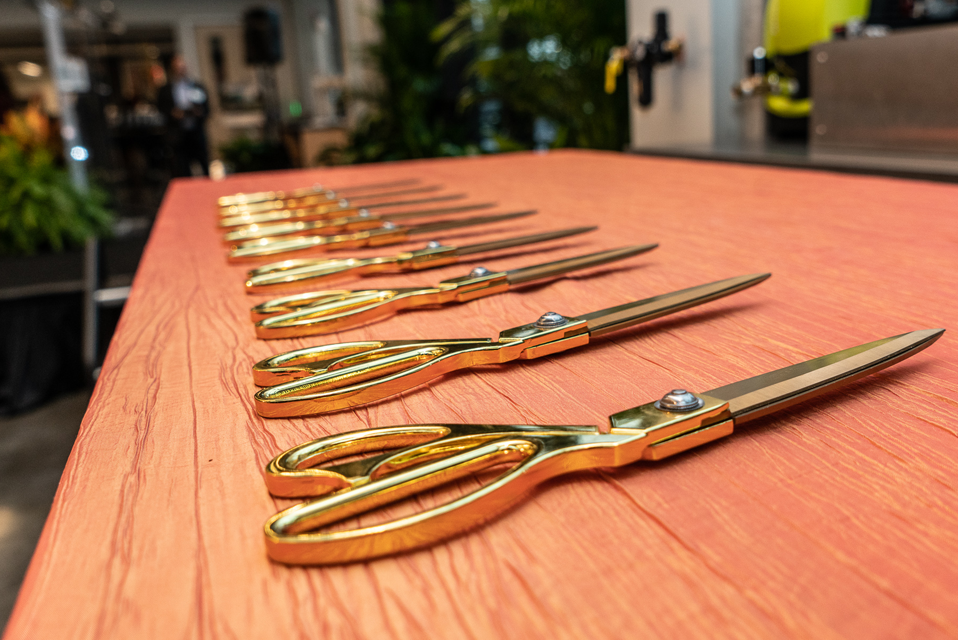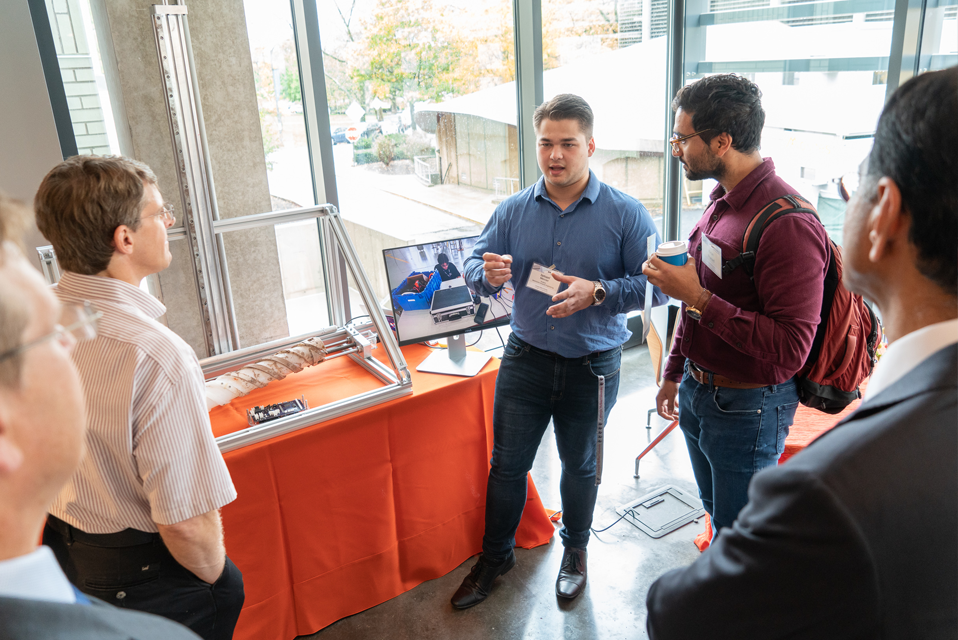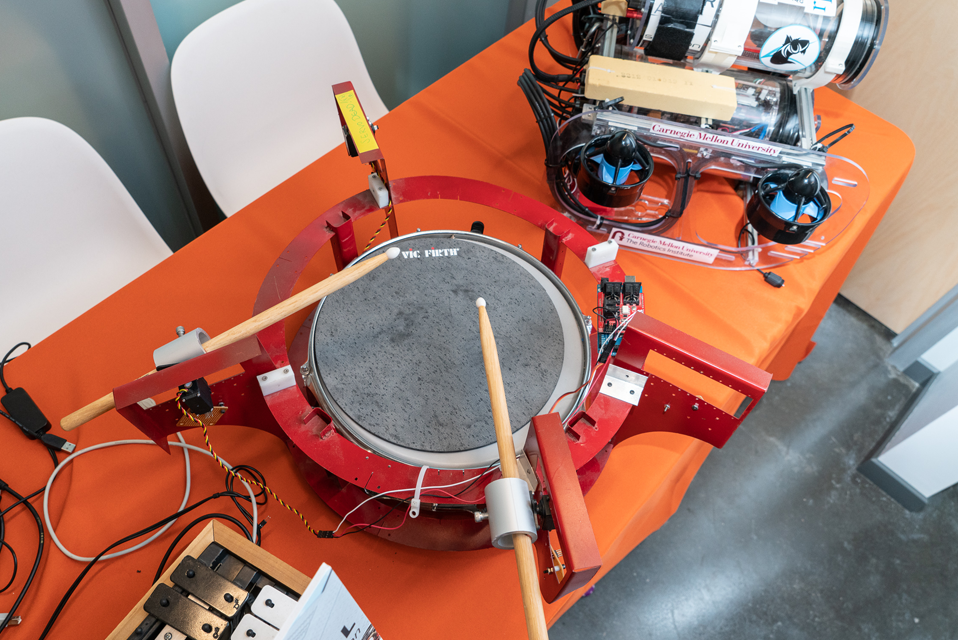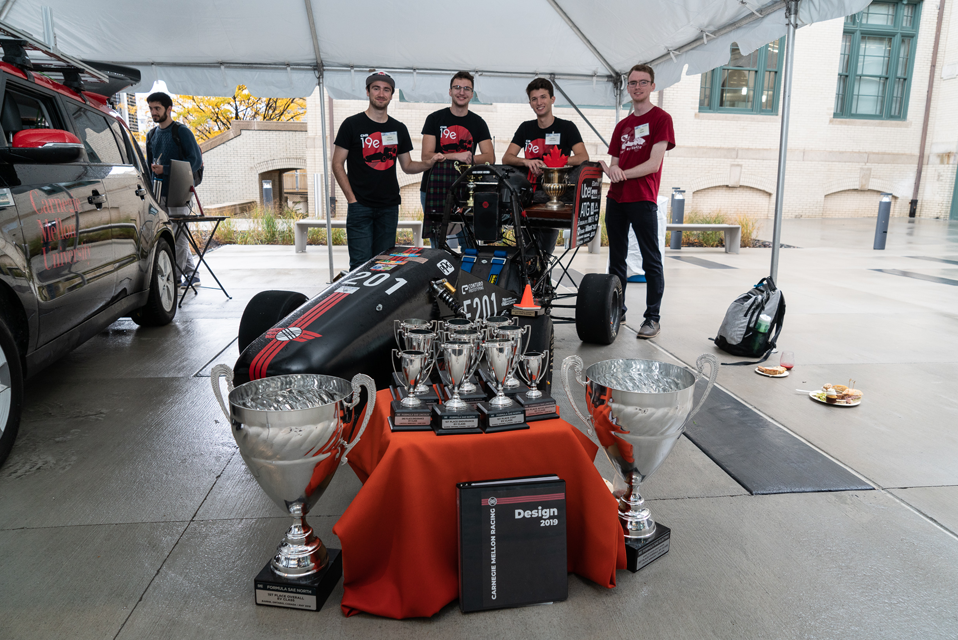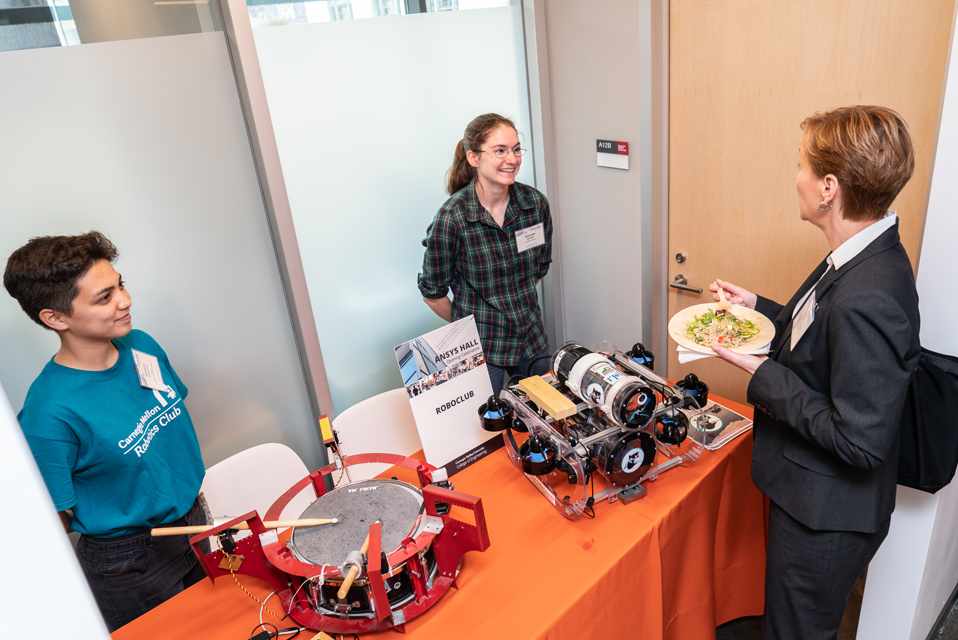A celebration of collaboration
With the opening of ANSYS Hall, Carnegie Mellon and ANSYS celebrate a partnership and a promise for the next generation of engineers.
Three years ago, ANSYS and Carnegie Mellon University announced a partnership to elevate the skills of the next generation of engineers and accelerate breakthrough innovation. A new building to expand the university’s maker culture and inspire creative problem solving was an idea, a sketch, and a promise.
Today, the 36,000 square foot ANSYS Hall opened as a spacious maker facility where students, faculty, and collaborators innovate and interact with cutting-edge simulation and fabrication tools.
“ANSYS Hall supports a world-class education and hands-on fabrication experience for all students, faculty, and other collaborators in a unique environment of intellectual mixing and ‘rubbing elbows’,” said Jonathan Cagan, interim dean of the College of Engineering.
Its glass high bay walls and garage door, windowed learning spaces, and mezzanine walkway serve as an open connection between classroom and community, providing ample opportunities to observe learning-by-doing in action. Additional resources include a design studio, engineering education labs, fabrication tools and workshops, a computer cluster, and multiple collaboration spaces with bright, natural light.
After completing appropriate training, students from every discipline (as well as faculty and staff) may use the facilities to transform their ideas into tangible results—not only for coursework but also for club activities, entrepreneurship, and fun.
Students have access to the ANSYS solution portfolio of software, enabling them to explore, simulate, and analyze solutions for real-world engineering challenges. Because a great deal of innovation happens during the manufacturing process, future engineers will need to learn to use simulation tools routinely to accelerate the speed and effectiveness of innovation. This means shorter product development cycles and final products that are better quality and quicker to manufacture.
“The tight coupling of simulation and making in ANSYS Hall will allow students to rapidly transform their ideas from digital concepts to physical prototypes in the same facility,” said Allen Robinson, head of the Department of Mechanical Engineering.
Roll up your sleeves
The university’s Tech Spark maker space extends seamlessly from Hamerschlag Hall into ANSYS Hall’s expansive design, fabrication, and building areas where several courses—from departments across the College of Engineering—take advantage of the opportunities for hands-on learning experiences. This fall, eighteen courses are already utilizing the new ANSYS Hall resources. Here are a few examples:
- Civil and Environmental Engineering Challenges: Design in a Changing World
- Gadgetry: Sensors, Actuators, and Processors
- Introduction to Electrical and Computer Engineering
- Maker Series: Intro to Welding
- Rehabilitation Engineering
- Special Topics: Additive Manufacturing and Product Development
Apply it in the classroom
Carnegie Mellon students can take courses that utilize ANSYS simulation software, often benefiting from the expertise of professionals. With the opening of ANSYS Hall, these courses will take place in the new, state-of-the-art computer classroom. A few examples:
- The course Special Topics in Applied Finite Element Analysis introduces students to applying this method to solve a wide range of engineering problems. It is taught by Joseph Selecki, a vice president at ANSYS and an alumnus of Carnegie Mellon’s mechanical engineering doctoral program.
- In Computational Analysis of Transport Phenomena, students solve real-world problems using ANSYS’ Fluent software tool. Satbir Singh, an associate teaching professor, collaborates with ANSYS experts to provide training to the students who then team up on group projects and presentations.
ANSYS’ research expertise intersects broadly with Carnegie Mellon’s, making it an ideal collaboration that touches diverse fields such as autonomous vehicles, additive manufacturing, biomedical devices, sustainability of physical products and connected products.
Offices for the dean of the College of Engineering and ANSYS partners are also located in the building. A lower level will feature a suite of collaborative faculty research laboratories in the future.
The opening celebration took place at ANSYS Hall on October 31, 2019 on Carnegie Mellon’s campus.
ANSYS and CMU’s partnership supports Make Possible: The Campaign for Carnegie Mellon University, which was publicly launched earlier this week. The campaign seeks to raise $2 billion in support of university-wide aspirations, as well as those of its colleges and schools. To date, more than 42,000 donors have contributed more than half of the goal, accelerating CMU’s leadership at the nexus of technology and humanity.

